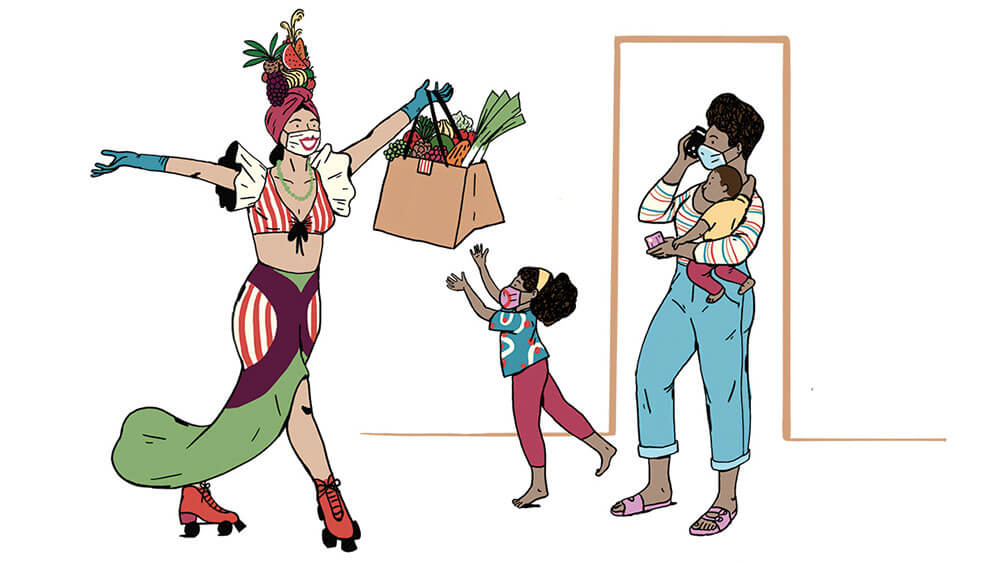
The 3rd Annual Food on Demand Conference, held virtually this year, drew more than 1,700 attendees and 30 exhibitors. (Illustration by Carmen Segovia)
There’s a meme on social media about food delivery being “a combination of my 3 favorite things: 1. Food. 2. Not moving. 3. Avoiding people.” That may have gotten a chuckle pre-pandemic, but food delivery is more of a serious business today — often essential to those in lock-down mode at home and a lifeline to restaurants unable to open their indoor dining areas due to coronavirus restrictions (see No. 3 — avoiding people).
But new service methods and technologies in the food industry were trending long before COVID-19, and that is how the Food on Demand Conference (FODC) was born. The event — put on by Food on Demand, a publisher of newsletters, webinars, and white papers focused on, as its tagline says, “the intersection of food, technology, and mobility” — launched in 2018, one year after the media organization was created by parent company Franchise Times in response to the ever-changing foodservice landscape.
Future of Food
A smorgasbord of people — representatives from major delivery providers like Grubhub, software vendors that work on point-of-sale systems, restaurant operators, robot and drone manufacturers, and more — attend FODC. The number of participants at this year’s virtual event was roughly triple the attendance at the 2019 live event — more than 1,700 attendees and more than 30 exhibitors.
“I’ve been pleasantly surprised at the number of delivery folks, whether they’re from delivery providers or other service providers … who’ve reached out to us from across the pond saying that they were tuning in as well,” said Tom Kaiser, editor of Food on Demand. “That’s just awesome — something that probably wouldn’t have happened to that level if it was in person.”
Sessions at the third annual conference, held Aug. 10-12, included:
- Virtual Reality: Making Money With Delivery-Only Kitchens and Virtual Kitchens
- Designing the Restaurant of the Future
- Bringing Your Delivery Program In House
This year, virtual attendees looked to Food on Demand for guidance on how to navigate the food industry in a world with COVID-19, which has forced restaurants to struggle with managing the cost of using delivery services with their business so severely impacted by the health crisis.
“That’s a very big part of what Food on Demand talks about — how restaurants can set themselves up to not only survive these new expenses in a very different business landscape,” Kaiser said, “but to ideally do this profitably.”
Casey Gale is associate editor at Convene.
